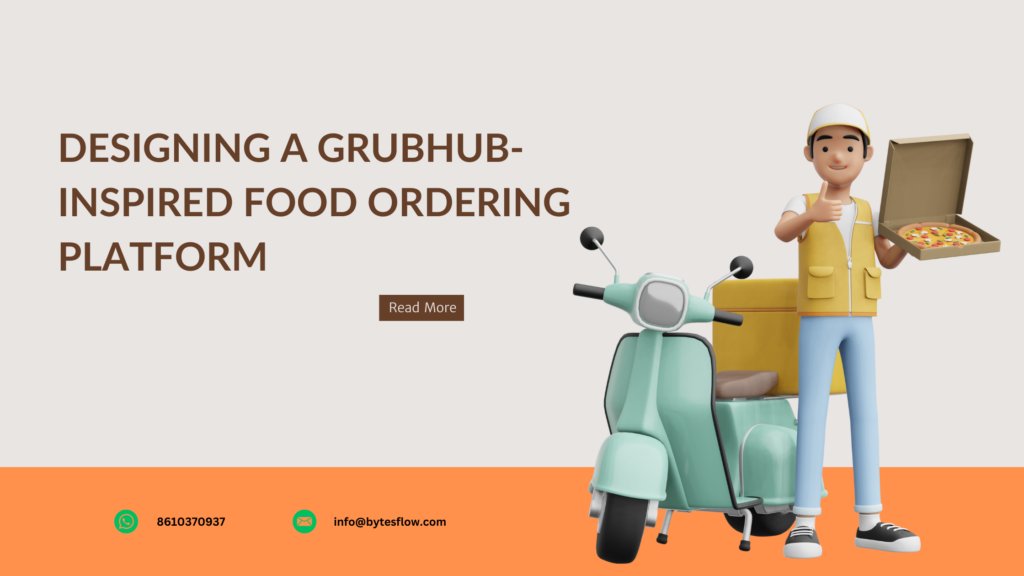In today’s fast-paced world, the demand for on-demand food delivery services is soaring, and businesses are striving to meet this demand with innovative solutions. One such solution is a Grubhub clone script, which promises to replicate the success of America’s leading food-ordering marketplace. If you’re considering developing your own Grubhub clone script, it’s crucial to understand the essential features and modules required to make it a success.
Understanding the Grubhub Model
Grubhub has revolutionized the food delivery industry by offering a convenient platform for customers to order from a wide range of restaurants. With over 28 million active users and partnerships with over 1 million restaurants, Grubhub’s success can be attributed to its robust business model and user-friendly features.
Key Modules of a Grubhub Clone Script
To create a successful Grubhub clone script, you’ll need to develop three essential modules:
1. Customer App
The customer app is the heart of your food delivery script, allowing users to browse restaurants, view menus, place orders, and track deliveries. Here are some key features to include:
Search Functionality: Enable users to search for restaurants based on location, cuisine, ratings, and more.
Express Order: Allow users to quickly add, remove, or reorder items from their order history.
Favorites: Let users save their favorite restaurants and menu items for easy access.
Real-time Tracking: Provide users with real-time updates on the status of their orders, from preparation to delivery.
Coupons and Discounts: Offer promotional discounts to attract and retain customers.
In-app Chat Support: Provide customer support within the app for any queries or issues.
2. Restaurant App/Admin Panel
The restaurant app and admin panel are essential for restaurant owners to manage their orders and menus. Key features include:
Menu Management: Allow restaurants to update their menus and pricing.
Order Management: Provide tools for managing incoming orders, tracking delivery status, and updating order details.
Performance Analytics: Offer insights into sales and customer behavior to help restaurants optimize their operations.
Communication Tools: Facilitate communication between restaurants and customers, including order notifications.
3. Delivery Driver App
The delivery driver app enables delivery partners to accept and fulfill orders efficiently. Key features include:
Order Assignment: Allow drivers to accept or reject delivery requests based on their availability.
Navigation Integration: Provide GPS navigation to help drivers find the fastest routes for deliveries.
Delivery Status Updates: Enable drivers to update the status of orders, from pickup to delivery.
Earnings Tracking: Provide drivers with visibility into their earnings, including tips and bonuses.
Additional Features to Consider
In addition to the core modules, here are some add-on features that can enhance the functionality of your Grubhub clone app script:
Scheduled Delivery: Allow users to schedule deliveries for a specific date and time.
Bulk Orders: Enable users to place large orders for parties or events.
Pre-ordering: Allow users to place orders in advance, with the option to modify them until a certain time before delivery.
Summarizing
Designing a Grubhub clone script requires careful consideration of the essential features and modules that make the original platform successful. By incorporating these key components into your script, you can create a user-friendly and efficient food delivery platform that attracts customers, restaurants, and delivery partners alike.
If you’re aiming to develop an efficient Grubhub clone script to gain a competitive edge in the bustling food delivery arena, look no further than Bytesflow Technologies. Our team specializes in delivering premium white label solutions tailored to meet your specific requirements.
Let Bytesflow Technologies be your partner in success as you embark on your journey to revolutionize the food delivery industry.
WhatsApp: 8610370937
Mail: [email protected]


